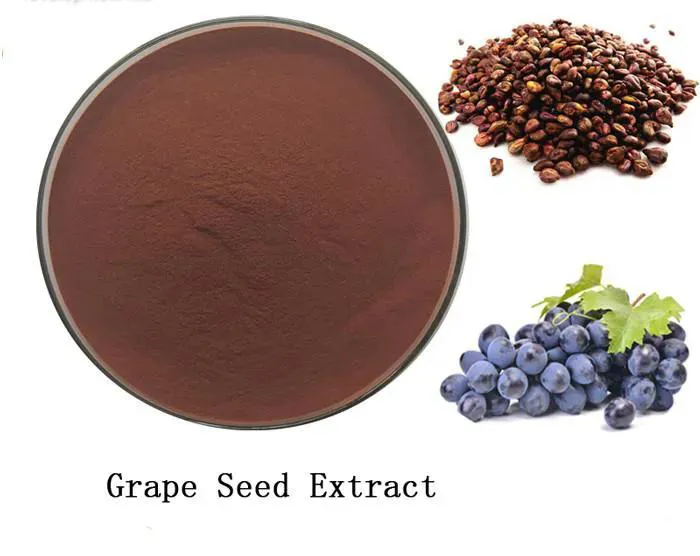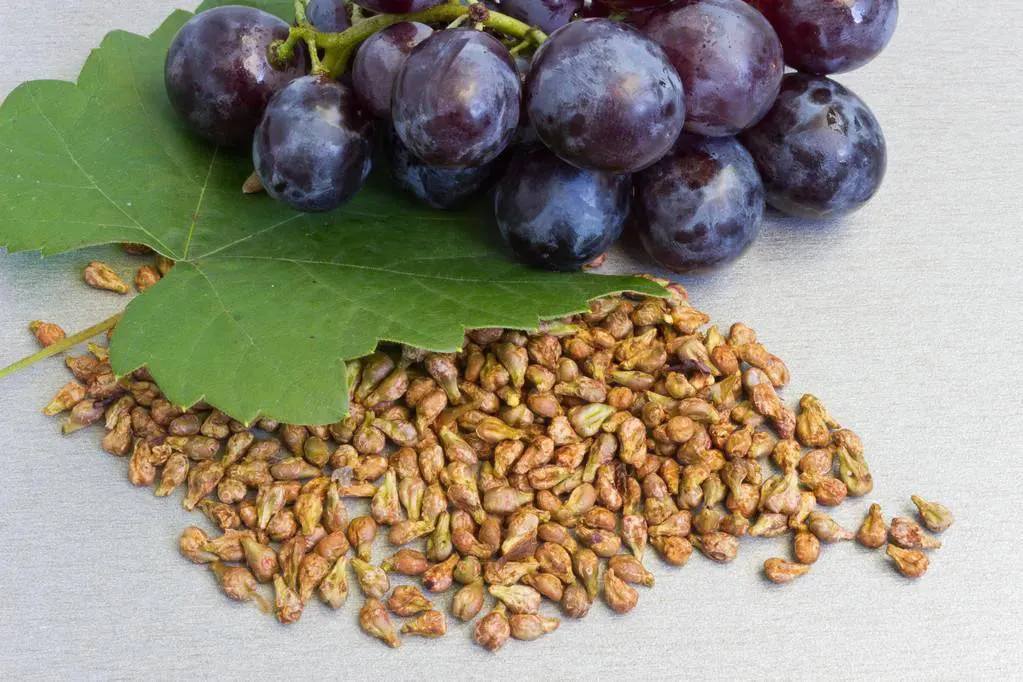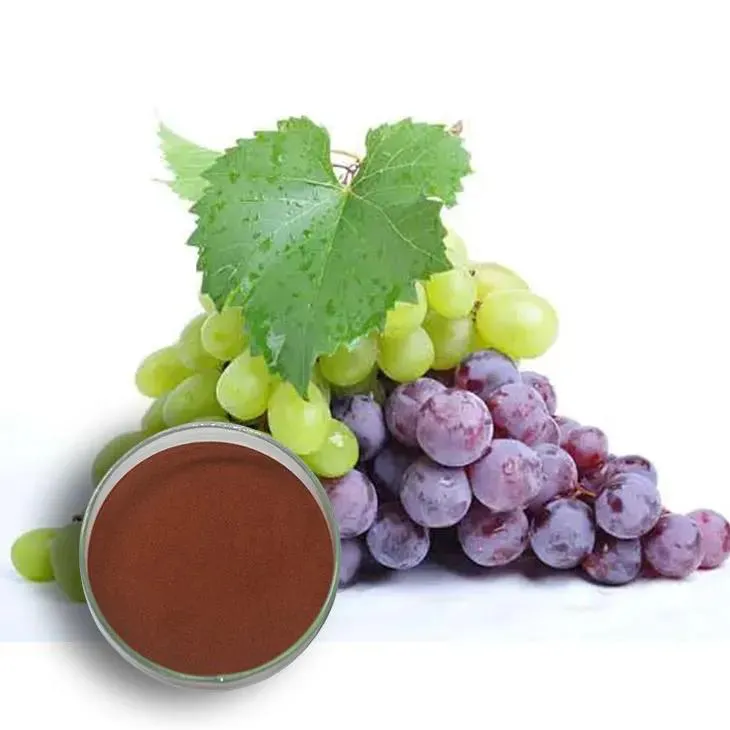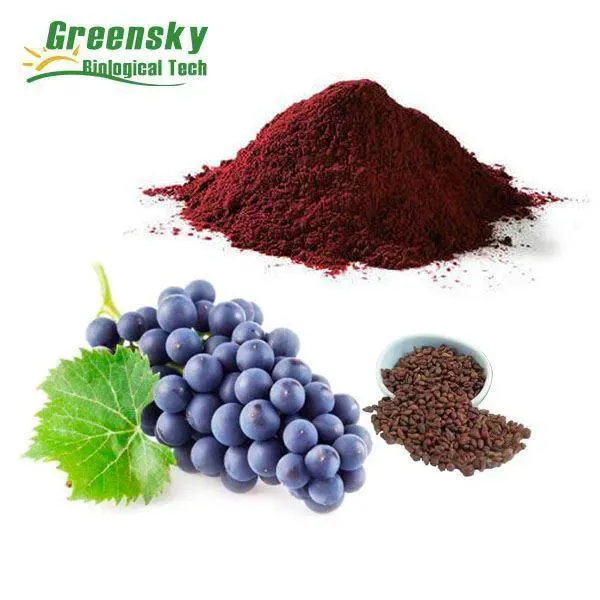- 0086-571-85302990
- sales@greenskybio.com
Grappling with the Future: Challenges and Opportunities for China's Grape Seed Extract Sector
2024-08-12

1. Introduction
China has emerged as a significant player in the global Grape Seed Extract market. Grape Seed Extract, rich in antioxidants such as proanthocyanidins, has found extensive applications in the health and cosmetics industries. The growth potential of this sector in China is substantial, but it is also confronted with a myriad of challenges.

2. Applications of Grape Seed Extract
2.1 In the Health Industry
Grape seed extract has been recognized for its numerous health benefits. It is believed to have antioxidant properties that can help combat oxidative stress in the body. This can potentially reduce the risk of chronic diseases such as heart disease, cancer, and neurodegenerative disorders. For example, in dietary supplements, it is often used to enhance the overall well - being of consumers. Moreover, it has anti - inflammatory properties, which are beneficial for those suffering from inflammatory conditions like arthritis.
2.2 In the Cosmetics Industry
The use of grape seed extract in cosmetics is also on the rise. Its antioxidant properties make it an ideal ingredient in skin - care products. It can help protect the skin from damage caused by free radicals, which are often associated with premature aging. In addition, it can improve skin elasticity and hydration, making it a popular choice in creams, lotions, and serums. For instance, many high - end cosmetic brands are incorporating grape seed extract into their anti - aging product lines.

3. Challenges in China's Grape Seed Extract Sector
3.1 Sustainable Sourcing of Raw Materials
One of the major challenges is the sustainable sourcing of grape seeds. China is a large producer of grapes, but ensuring a consistent supply of high - quality grape seeds for extraction can be difficult. Climate change can affect grape yields and quality, leading to fluctuations in the availability of raw materials. Additionally, the competition for grapes between the wine industry and the extract industry can pose a challenge. For example, if the wine industry experiences a boom, there may be fewer grapes available for extraction.
3.2 Meeting Diverse International Standards
The international market has diverse standards for grape seed extract products. China's producers need to comply with these standards to export their products. For instance, in the European Union, there are strict regulations regarding the purity, quality, and safety of food supplements and cosmetic ingredients. Meeting these standards requires significant investment in quality control and testing facilities. Moreover, different countries may have different labeling requirements, which can be complex to manage.
3.3 Domestic Consumption Promotion
Despite the potential health and beauty benefits, the domestic consumption of grape seed extract products in China is relatively low. There is a lack of consumer awareness about the product. Many consumers are not familiar with the benefits of grape seed extract and may be more inclined to choose traditional health products or cosmetics. Additionally, the price of some grape seed extract products can be relatively high, which may limit their accessibility to a wider range of consumers.

4. Opportunities in China's Grape Seed Extract Sector
4.1 Growing Health and Wellness Trend
The global trend towards health and wellness presents a significant opportunity for China's grape seed extract sector. As consumers become more health - conscious, there is an increasing demand for natural and functional food supplements. Grape seed extract, with its proven health benefits, can tap into this growing market. For example, in urban areas, where the disposable income is relatively high, consumers are more likely to invest in products that promote their health and well - being.
4.2 Expansion in the Cosmetics Market
The booming cosmetics market in China also offers opportunities for grape seed extract. With the increasing emphasis on natural and effective ingredients in cosmetics, grape seed extract can be positioned as a premium ingredient. The growing middle - class population, especially women, is more willing to spend on high - quality skin - care products. By collaborating with cosmetic brands, producers of grape seed extract can expand their market share.
4.3 Technological Advancements
Advances in extraction technology can enhance the quality and efficiency of grape seed extract production. New extraction methods can help to obtain a higher yield of active ingredients and reduce production costs. For example, supercritical fluid extraction technology has shown promise in producing high - quality grape seed extract. Moreover, technological advancements in product formulation can lead to the development of more innovative and appealing products, such as nano - emulsions or liposomes containing grape seed extract.

5. Strategies for the Future
5.1 Strengthening Sustainable Farming Practices
To address the issue of sustainable sourcing, producers can invest in sustainable farming practices. This can include measures such as water conservation, soil management, and pest control. For example, drip irrigation can be used to reduce water consumption in grape cultivation. By promoting sustainable farming, producers can ensure a more stable supply of high - quality grape seeds in the long term.
5.2 Standardization and Certification
China's grape seed extract producers should strive for standardization and obtain relevant certifications. This can help to build trust with international customers and facilitate exports. For instance, obtaining ISO certifications can demonstrate the company's commitment to quality management. Additionally, compliance with international standards such as Good Manufacturing Practice (GMP) can enhance the competitiveness of Chinese products in the global market.
5.3 Marketing and Consumer Education
To boost domestic consumption, effective marketing and consumer education are crucial. Producers can use various marketing channels, such as social media, to promote the benefits of grape seed extract. For example, they can create engaging content about the product's health and beauty benefits on platforms like WeChat or Weibo. Additionally, collaborating with health and beauty influencers can help to reach a wider audience. Consumer education programs can also be organized to increase awareness about the product.
6. Conclusion
The grape seed extract sector in China is at a crossroads, facing both challenges and opportunities. By addressing the challenges of sustainable sourcing, international standard compliance, and domestic consumption promotion, and seizing the opportunities presented by the health and wellness trend, the cosmetics market expansion, and technological advancements, the sector can achieve sustainable growth in the future. It is essential for producers, policymakers, and other stakeholders to work together to realize the full potential of China's grape seed extract sector.
FAQ:
What are the main challenges in the sustainable sourcing of raw materials for China's grape seed extract sector?
The main challenges include issues such as ensuring a stable supply of high - quality grapes. Grape cultivation can be affected by factors like climate change, pests, and diseases. Additionally, competition for grape resources from the wine and food industries may limit the availability of grapes for extraction. There may also be challenges in ensuring sustainable agricultural practices among grape growers to meet environmental and ethical requirements.
How can Chinese grape seed extract producers meet diverse international standards?
They need to closely monitor and understand the different regulations and quality requirements in various international markets. This may involve investing in research and development to improve extraction and purification processes to meet purity and safety standards. Collaborating with international testing laboratories can also help in ensuring compliance. Staff training on international standards and quality management systems is crucial to maintain consistency in production.
What are the potential opportunities for promoting domestic consumption of grape seed extract in China?
There is an opportunity to raise awareness about the health benefits of grape seed extract through marketing and educational campaigns. As the Chinese population becomes more health - conscious, there is a growing market for natural health products. Collaborating with domestic health and wellness influencers can also increase product visibility. Additionally, developing products tailored to the specific needs and preferences of the Chinese consumer, such as in combination with traditional Chinese medicine ingredients, could drive domestic consumption.
How does competition from other countries affect China's grape seed extract sector?
Competition from other countries can put pressure on pricing. If other countries can produce grape seed extract more cost - effectively, it may lead to a decrease in market share for Chinese producers. However, it also presents an opportunity for Chinese producers to improve their competitiveness by focusing on areas such as higher quality, unique product features, and better customer service. They can also learn from the marketing and production strategies of international competitors to enhance their own operations.
What role can technological innovation play in the future of China's grape seed extract sector?
Technological innovation can play a significant role. New extraction techniques can improve the efficiency and quality of grape seed extract production, reducing costs. Advanced analytics can be used to better understand the chemical composition and potential applications of the extract. Innovation in product formulation can lead to the development of new and more effective products in the health and cosmetics fields. It can also help in improving packaging and preservation methods to extend the shelf - life of products.
Related literature
- The Development of Grape Seed Extract in the Global Market"
- "Sustainable Sourcing of Grape Seed for Extract Production: A Global Perspective"
- "Meeting International Standards in the Grape Seed Extract Industry"
- ▶ Hesperidin
- ▶ citrus bioflavonoids
- ▶ plant extract
- ▶ lycopene
- ▶ Diosmin
- ▶ Grape seed extract
- ▶ Sea buckthorn Juice Powder
- ▶ Beetroot powder
- ▶ Hops Extract
- ▶ Artichoke Extract
- ▶ Reishi mushroom extract
- ▶ Astaxanthin
- ▶ Green Tea Extract
- ▶ Curcumin Extract
- ▶ Horse Chestnut Extract
- ▶ Other Problems
- ▶ Boswellia Serrata Extract
- ▶ Resveratrol Extract
- ▶ Marigold Extract
- ▶ Grape Leaf Extract
- ▶ blog3
-
Curcumin
2024-08-12
-
Maitake Mushroom Extract
2024-08-12
-
Phyllanthus Emblica Extract
2024-08-12
-
Lotus leaf extract
2024-08-12
-
Hawthorn powder
2024-08-12
-
Fenugreek Extract Powder
2024-08-12
-
Grapefruit Seed Extract Powder
2024-08-12
-
Coconut Water Powder
2024-08-12
-
Avocado Extract Powder
2024-08-12
-
Carrageenan Extract Powder
2024-08-12





















